Among Vietnam’s 54 recognized ethnic groups, the La Chi people remain one of the lesser-known communities despite their rich cultural heritage and distinct identity. Nestled primarily in the mountainous northern provinces, this ethnic minority has preserved unique traditions and linguistic characteristics that set them apart from neighboring groups. Their story reflects the complex tapestry of Vietnam’s ethnic diversity. It also highlights the resilience of indigenous communities in maintaining their cultural identity amid changing times. As travelers increasingly seek authentic cultural experiences, understanding the La Chi people offers valuable insight into Vietnam’s multicultural landscape beyond familiar tourist narratives.
1. Who Are the La Chi People?
The La Chi people (also known as Lachi, La Chi, or Lati) represent one of Vietnam’s 54 officially recognized ethnic groups. They belong to the larger Kadai language family, which connects them linguistically to various ethnic groups across Southeast Asia. With a distinctive cultural identity shaped by centuries of adaptation to mountainous environments, the La Chi have maintained many traditional practices while gradually integrating aspects of modern Vietnamese society.
1.1 Ethnic Classification in Vietnam and China
In Vietnam’s official ethnic classification system, the La Chi are recognized as a distinct group, while in China they are often classified as part of the larger Yao ethnic group. This cross-border classification difference highlights the complex nature of ethnic identity in the region. Vietnamese ethnologists classify the La Chi within the Kadai language family alongside the Co Lao and La Ha peoples, recognizing their linguistic and cultural uniqueness. Anthropological studies suggest the La Chi share historical connections with both the Tai-Kadai and Austroasiatic populations, reflecting centuries of cultural exchange in the mountainous border regions.
1.2 Names and Autonyms
The La Chi people refer to themselves as “La Chí” in their native tongue, though various other names appear in historical and ethnographic records. In different regions and historical periods, they have been documented as Lati, Lachi, or Cu Te depending on the recording authority and location. Chinese records historically referred to them as “Lai Xi” or “La Xi” in various administrative documents. Vietnamese scholars note that some subgroups also use specific autonyms like “La Qua” or “Cu Te” that identify particular lineages or geographic communities. These naming variations reflect both the group’s internal diversity and the different ways external authorities have categorized them throughout history.
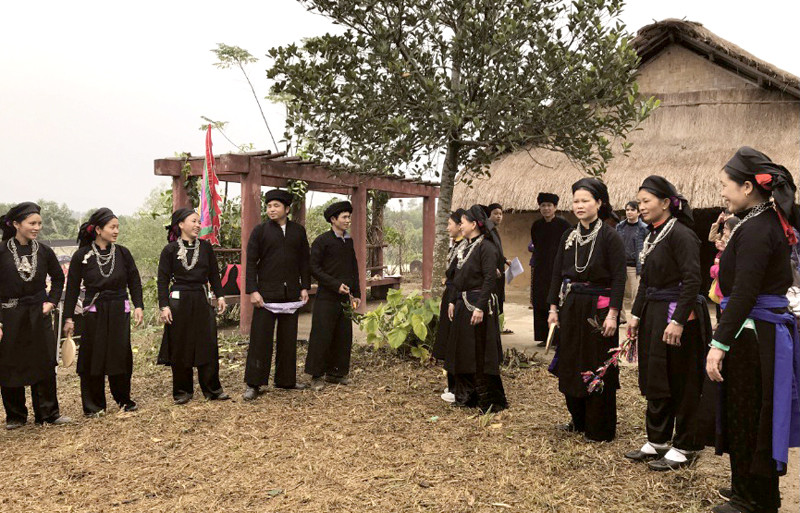
Conquer Tay Con Linh Peak – Ha Giang’s Highest Mountain 2025
2. Population and Geographic Distribution
The La Chi people maintain a relatively small but stable population primarily concentrated in Vietnam’s northern mountainous regions. According to the 2019 Vietnam Population and Housing Census, approximately 15.126 La Chi people live within Vietnam’s borders. This represents a modest increase from previous census figures, suggesting the community has managed to maintain demographic stability despite various socioeconomic challenges facing ethnic minorities in the region.
2.1 Main Provinces and Districts
The La Chi population is predominantly concentrated in the northern mountainous provinces of Vietnam, with the highest numbers found in Ha Giang province. Within Ha Giang, the districts of Xín Mần, Hoàng Su Phì, and Vi Xuyen host the majority of La Chi communities. Specifically, communes such as Thong Nguyen, Ta Nhiu, and Nam Dan in Xin Man district feature significant La Chi settlements, often situated at elevations between 800-1,500 meters above sea level. Smaller La Chi communities can also be found in the neighboring provinces of Lào Cai and Cao Bang, typically in remote upland valleys that have historically provided natural boundaries and protection for cultural preservation.
2.2 Diaspora (China and Elsewhere)
Beyond Vietnam’s borders, approximately 10,000-12,000 La Chi people reside in China’s southern provinces, particularly in Yunnan and Guangxi. These communities are often administratively classified under the broader Yao nationality within China’s ethnic classification system. Historical migration patterns have created distinct regional variations among La Chi diaspora communities, with subtle differences in dialect, traditional dress, and cultural practices.
Some scholars suggest smaller numbers of La Chi descendants may also be found in northern Laos, though these communities have largely integrated with other ethnic groups over time. Recent decades have also seen small numbers of La Chi people migrating to urban centers in Vietnam for education and employment opportunities, creating nascent urban diaspora communities in cities like Ha Giang City and even Hanoi.
3. Language of the La Chi
The La Chi language represents an important cultural cornerstone for the community, embodying centuries of oral traditions, folk knowledge, and ethnic identity. Belonging to the Kadai branch of the Tai-Kadai language family, it shares linguistic features with related languages across the China-Vietnam border region. The language uses tonal structures and vocabulary that linguists consider valuable for understanding broader historical language development in Southeast Asia.
3.1 Linguistic Features and Subdivisions
La Chi language features six tones and a phonological system with approximately 20 consonants and 13 vowels. Linguists have identified two main dialects: the northern dialect spoken in Xin Man district and the southern dialect found in Hoang Su Phi. These dialects share approximately 85% vocabulary similarity but differ in certain tonal patterns and consonant pronunciations. La Chi maintains a subject-verb-object sentence structure and utilizes classifiers similar to those found in Vietnamese and Chinese. Though traditionally not written, recent documentation efforts have created preliminary transcription systems using adapted Vietnamese script. Some linguistic features, including specific agricultural terminology and ritual vocabulary, provide valuable insights into the group’s historical connection to early Tai-Kadai speaking populations.
3.2 Language Preservation Efforts
In recent decades, concerns about language preservation have prompted both community-led and government-supported initiatives to document and maintain the La Chi language. Local elders work with younger community members to record oral histories, songs, and traditional knowledge in their native tongue. Some primary schools in La Chi areas have implemented mother-tongue support programs that introduce basic literacy while transitioning to Vietnamese instruction.
The Institute of Linguistics in Hanoi has conducted fieldwork to document La Chi vocabulary and grammatical structures, producing preliminary dictionaries and learning materials. Despite these efforts, the language faces significant pressure from Vietnamese as the dominant language of education, media, and economic opportunity. Community leaders emphasize the need for balanced bilingualism that allows younger generations to maintain their linguistic heritage while gaining fluency in Vietnamese for educational and economic advancement.
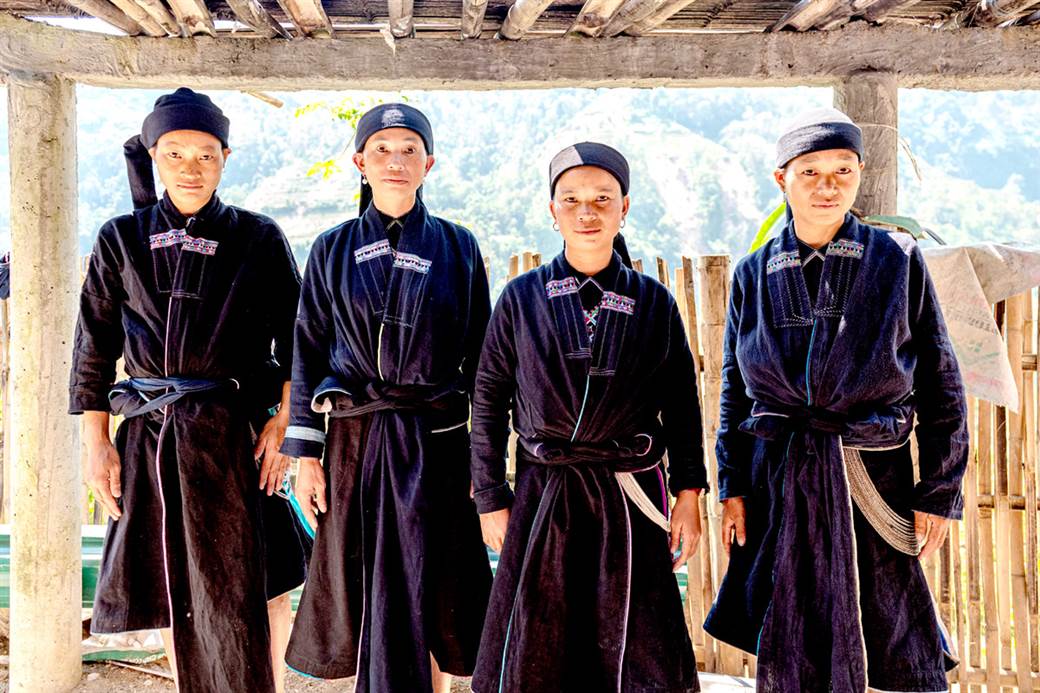
Brocade Clothes in Ha Giang: 6 Ethnic Styles You Should Know
4. Culture and Traditions
La Chi cultural traditions reflect their deep connection to the mountainous environment and agricultural lifestyle developed over centuries. Their material and spiritual practices create a unique cultural identity that has adapted to both historical challenges and contemporary influences. Distinctive elements of La Chi culture include colorful textile arts, elaborate wooden architecture, and seasonal ceremonies that mark the agricultural calendar.
4.1 Festivals and Ceremonies
The La Chi ritual calendar centers around agricultural cycles and ancestor veneration, with major festivals coinciding with planting and harvest seasons. The most significant celebration is the Khu Cu Te festival, typically held after the autumn rice harvest between the tenth and twelfth lunar months. During this multi-day event, families gather to honor ancestors, give thanks for harvests, and pray for prosperity in the coming year. Ceremonial offerings include specially prepared sticky rice cakes, pork, and homemade rice wine served first to ancestors and then shared among participants.
Community performances feature traditional music, dance, and storytelling that reinforce cultural narratives. Other important ceremonies include spring planting rituals that involve blessing the fields and forest protection ceremonies honoring nature spirits believed to safeguard community lands. These ceremonies represent both religious practice and cultural reinforcement, transmitting values and knowledge between generations.
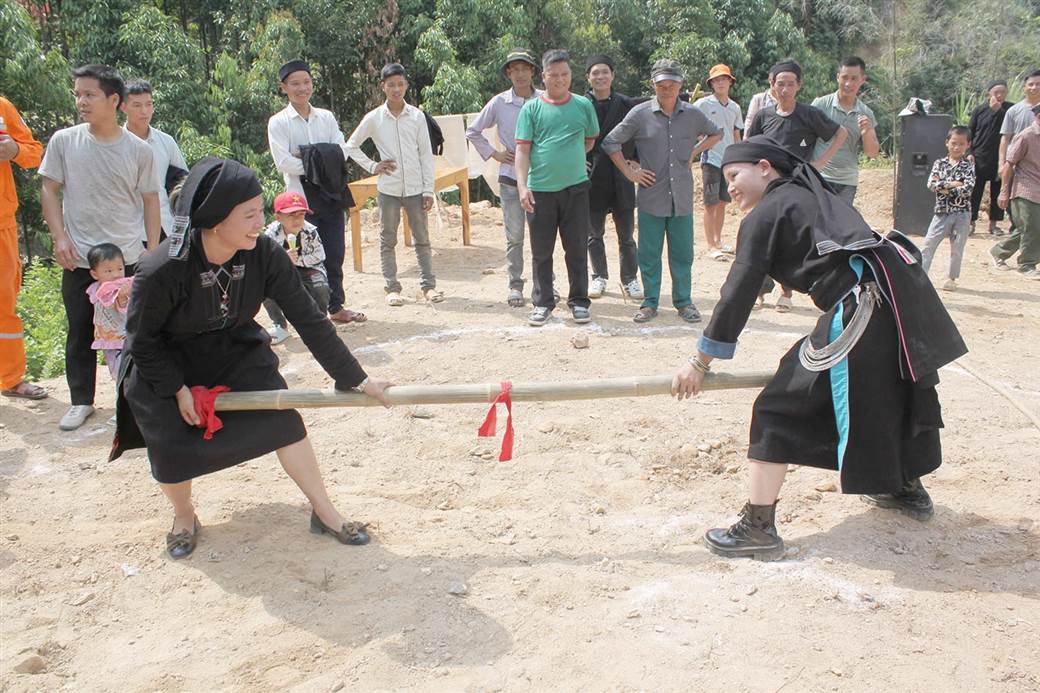
4.2 Music, Song, and Costume
4.3 Agricultural Customs
The La Chi maintain distinctive agricultural practices adapted to their mountainous environment, combining wet rice cultivation in valley bottoms with terraced fields and forest gardens on hillsides. Their agricultural calendar traditionally divides the year into 24 periods corresponding to natural cycles that guide planting and harvesting activities. Cotton cultivation and processing hold special cultural significance, with traditional techniques for growing, spinning, and weaving cotton passed down through generations of women.
Another distinctive practice involves cultivating strobilanthes cusia (cham) plants for producing indigo dye, a specialized knowledge set that includes harvesting, fermentation, and application techniques. Seed selection and preservation rituals ensure genetic diversity in local crop varieties adapted to specific microclimates. These agricultural customs reflect not just practical adaptations but also embody cultural values around sustainability, self-sufficiency, and intergenerational knowledge transfer that remain relevant even as some farming practices modernize.
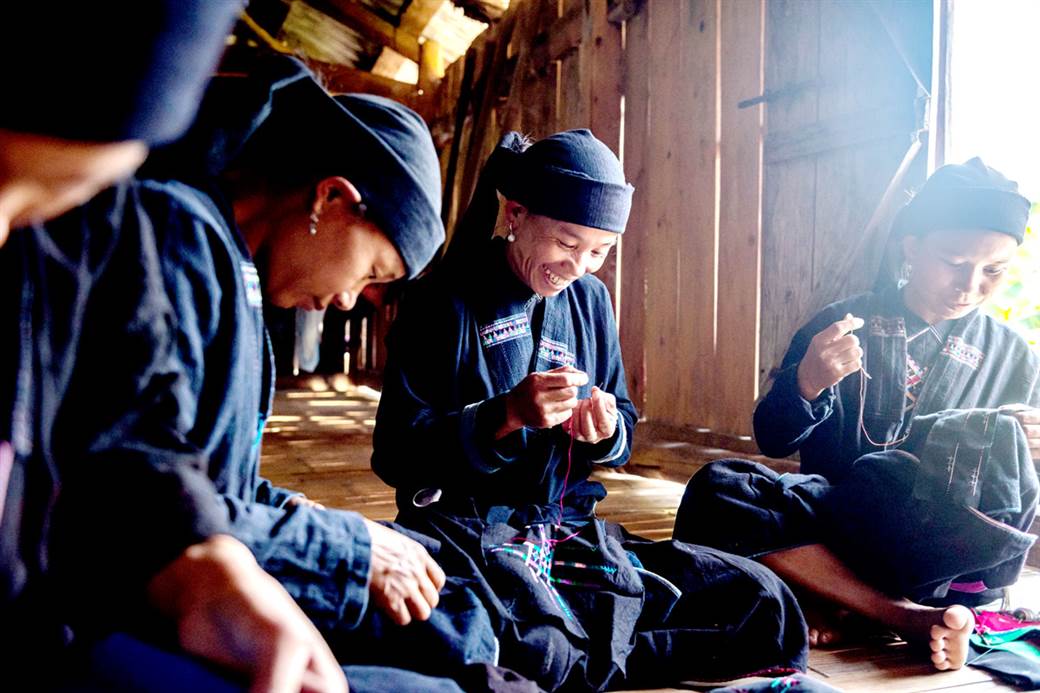
5. Historical Origins and Migration
The historical narrative of the La Chi people intertwines with broader regional movements of peoples across the mountainous landscapes spanning present-day southern China and northern Vietnam. Archaeological evidence and linguistic analysis suggest connections to early Kadai-speaking populations that inhabited the region for millennia. Their distinct identity emerged through complex processes of migration, adaptation, and cultural exchange with neighboring groups.
5.1 Ancestors and Oral History
La Chi oral histories trace their origins to ancestral homelands in what is now southern China, particularly the mountainous regions of Yunnan and Guangxi. Creation stories often reference a great migration southward following ancient river valleys, led by culture heroes who discovered suitable settlement areas in mountain valleys. Elders recount narratives of eighteen ancestral clans that established the foundation of La Chi society, each associated with specific territories and ritual responsibilities. These stories describe early interactions with other ethnic groups, including periods of both conflict and alliance that shaped their cultural boundaries.
Chinese historical records from the Tang and Song dynasties (7th-13th centuries) mention groups that scholars believe may correspond to early La Chi communities, referring to mountain peoples with distinctive textile traditions and agricultural practices. While these oral histories blend mythological elements with historical events, they provide valuable insights into the group’s self-perception and cultural memory of their origins and migrations.
5.2 Migration Patterns
Historical evidence suggests the La Chi migration into their current territories occurred in several waves between the 13th and 18th centuries. Early movements likely responded to political pressures during the expansion of Chinese imperial control into the southwestern frontier regions. Later migrations corresponded with periods of environmental stress and conflicts with neighboring groups competing for fertile valley lands. By the early Nguyen dynasty period (early 19th century), La Chi communities had established relatively stable settlements in their current locations in northern Vietnam.
Settlement patterns typically began with pioneer families establishing new villages in previously unoccupied valleys. Gradually, extended family networks joined these core settlements, leading to village expansion over time. This pattern created the clustered village distributions still visible today, with related lineage groups occupying adjacent valleys and maintaining social connections through marriage alliances and shared ritual activities. These historical migration patterns explain both the current distribution of La Chi communities and their cultural adaptations to specific ecological niches in the mountainous borderlands.
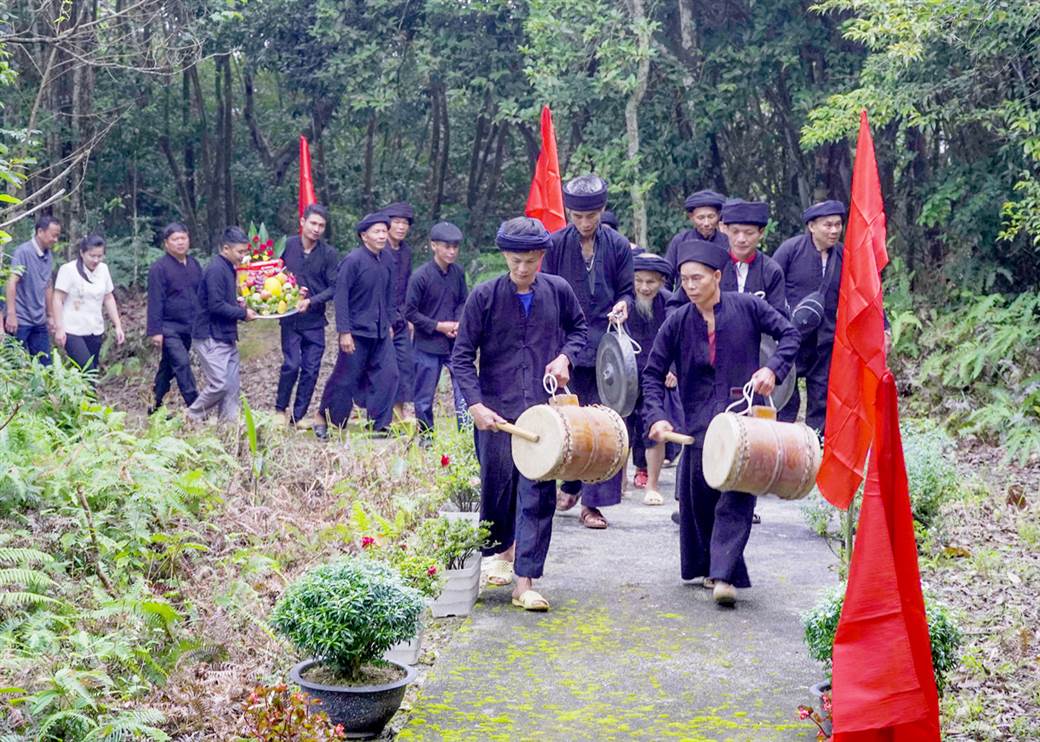
6. Modern Life and Challenges
Today’s La Chi communities navigate a complex balance between preserving cultural heritage and adapting to rapidly changing social and economic conditions. Government development programs, increased market integration, and improved transportation infrastructure have transformed traditional lifeways while creating new opportunities and challenges. La Chi individuals and communities demonstrate remarkable resilience as they forge paths that maintain cultural identity while engaging with broader Vietnamese society.
6.1 Education and Economy
Educational access has improved significantly for La Chi communities in recent decades, though challenges remain. Primary schools now operate in most La Chi villages, with instruction primarily in Vietnamese. Literacy rates have improved to approximately 80% among younger generations, compared to much lower rates among older community members. Bilingual education initiatives in some areas help students transition from La Chi to Vietnamese while maintaining connection to their native language. Economic activities have diversified beyond traditional subsistence agriculture. While rice cultivation and animal husbandry remain important, many families now engage in commercial crops including cardamom, cinnamon, and tea that connect to regional and national markets.
Small-scale handicraft production, particularly textiles and bamboo products, provides supplementary income for some households. Tourism development in northern provinces has created limited employment opportunities in homestay operations and cultural performances, though these primarily benefit communities near established tourist routes. Despite these changes, economic challenges persist, with La Chi communities generally experiencing higher poverty rates than the national average.
6.2 Cultural Preservation
Cultural preservation efforts combine community initiatives with external support programs. Village elders maintain traditional knowledge through informal teaching and participation in ceremonial activities that transmit core cultural values to younger generations. Some communities have established cultural centers where traditional crafts, music, and dance are documented and practiced. Government cultural preservation programs have recognized certain La Chi traditions as national intangible cultural heritage, providing limited funding for documentation and festival support.
These efforts face significant challenges from media influences, outmigration of young people for education and employment, and economic pressures that make traditional practices seem less relevant. Community leaders emphasize the need for cultural adaptation rather than static preservation, seeking ways to maintain core values and practices while acknowledging inevitable change. Successful initiatives often combine traditional elements with contemporary applications, such as adapting traditional textile designs for products that appeal to urban and tourist markets while maintaining traditional techniques and motifs.
6.3 Interethnic Relations
La Chi communities maintain complex relationships with both neighboring ethnic groups and majority Vietnamese society. Traditional exchange relationships with adjacent Hmong, Dao, and Tay communities involve economic specialization, ritual cooperation, and intermarriage patterns that have evolved over centuries. These relationships create multicultural border zones where practices and even identities sometimes blend while maintaining distinct cores. Integration with mainstream Vietnamese society has accelerated through education, media access, and improved transportation connections to urban centers.
Young La Chi increasingly identify simultaneously with their ethnic heritage and broader Vietnamese national identity. While ethnic discrimination has decreased through improved legal protections and changing attitudes, subtle biases still affect educational and economic opportunities. Cultural tourism presents both opportunities and challenges, sometimes reducing complex traditions to simplified performances for visitors while also creating economic incentives for cultural maintenance. Despite these complexities, many La Chi communities demonstrate agency in navigating interethnic spaces, selectively engaging with external influences while maintaining boundaries around core cultural practices and identities.
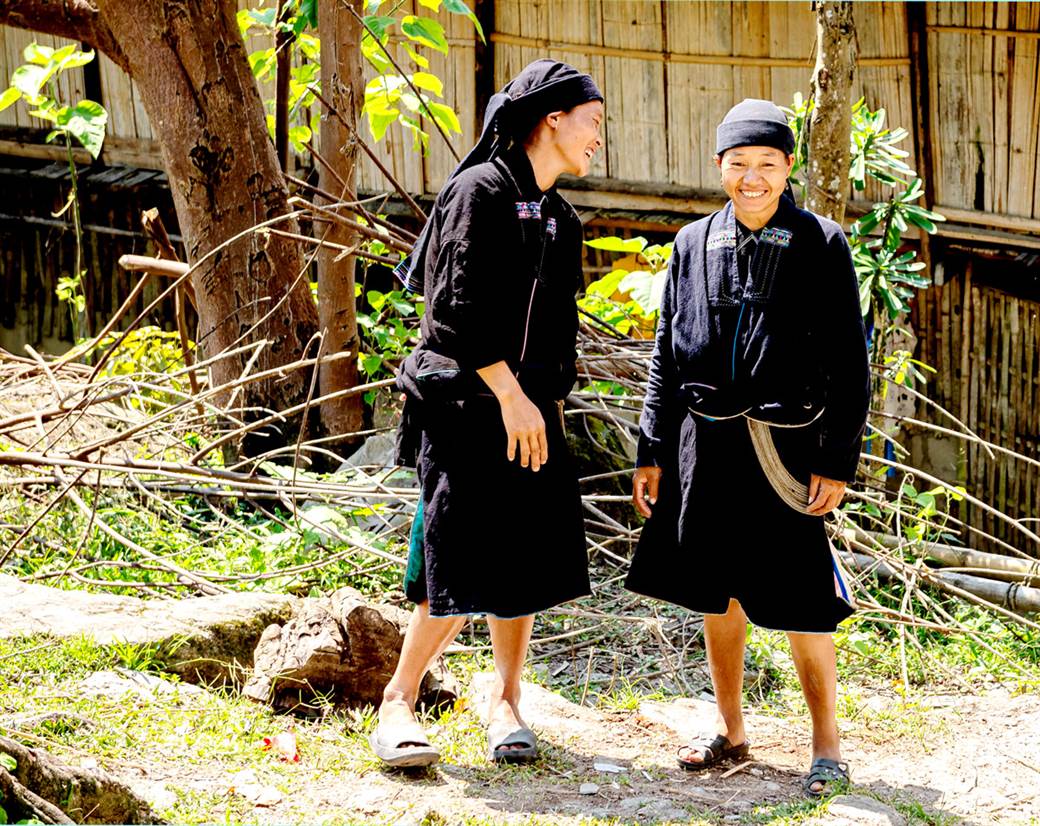
The La Chi people represent an important thread in Vietnam’s rich ethnic tapestry, maintaining distinctive cultural traditions while adapting to changing times. Their story demonstrates both the resilience of indigenous cultural systems and the ongoing challenges facing minority communities in modernizing societies. From their traditional agricultural practices and vibrant festivals to their unique language and textiles, the La Chi have preserved elements of heritage that contribute to Vietnam’s cultural diversity.
As Vietnam continues developing its cultural tourism potential, the La Chi communities offer authentic experiences for travelers seeking deeper understanding beyond mainstream destinations. For visitors interested in experiencing this cultural heritage firsthand, several villages in Ha Giang province welcome respectful tourism through homestay programs and cultural exchanges. These opportunities provide meaningful connections while supporting sustainable livelihoods in La Chi communities.
Understanding groups like the La Chi reminds us that Vietnam’s national identity encompasses many voices and histories beyond dominant narratives. Their continued presence enriches Vietnam’s cultural landscape while challenging simplified notions of national heritage. For travelers seeking authentic cultural experiences in northern Vietnam, Phieu Travel offers guided tours to ethnic minority regions including La Chi villages, with knowledgeable local guides and respectful community interactions. Visit Phieutravel.com to learn more about responsible tourism options that support cultural preservation while creating meaningful travel experiences among the La Chi people and other ethnic communities of Vietnam’s mountainous north.
Read more:
- Ha Giang’s Dao People: A Complete Guide to Their Culture and Festivals
- H’mong People in Ha Giang: Traditions, Life & Travel Tips
- Inside the Life of the Lo Lo People in Vietnam
- The Ultimate Guide to Khau Vai Love Market in Ha Giang

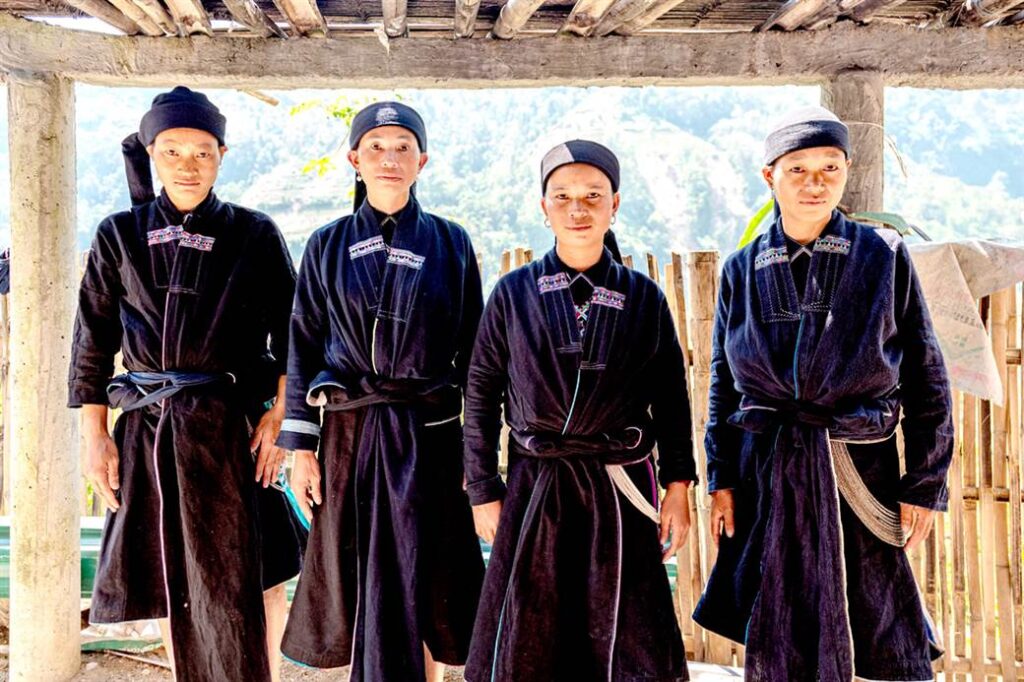
You Might Also Like
Ha Giang Weather in September: Complete Guide for Travelers
Exploring the magnificent Ha Giang Loop in September offers travelers a perfect balance of favorable[...]
Quan Ba Twin Mountains: Ha Giang’s Iconic Fairy Hills and Complete Travel Guide
The mystical Quan Ba Twin Mountains rise from the emerald valleys of Ha Giang like[...]
Vuong family mansion: the architectural marvel and cultural legacy of Ha Giang
Deep in Vietnam’s northern highlands, where mist-shrouded mountains meet terraced rice fields, stands a testament[...]
Ha Giang Loop Safety Tips: How to Ride Securely in Vietnam’s Northern Mountains
The Ha Giang Loop, with its winding mountain roads and breathtaking landscapes, offers one of[...]
The Ultimate Guide to the M-Shaped Curve on Ha Giang Loop
Vietnam’s remote northern province of Ha Giang hides a natural wonder that has captivated adventurous[...]
Most Beautiful Places to Visit in Vietnam: Essential Destinations and Insider Tips
Vietnam captivates travelers with its stunning landscapes, rich cultural heritage, and warm hospitality. From mist-shrouded[...]
Beyond the Beaten Path: Discovering Ha Giang Province in Northeast Vietnam
Ha Giang Province in Northeast Vietnam stands as one of the country’s last frontiers for[...]
Rainy season in Ha Giang: what to expect, when to go, and travel tips
Vietnam’s northern frontier reveals a different face during the rainy season, transforming Ha Giang’s limestone[...]